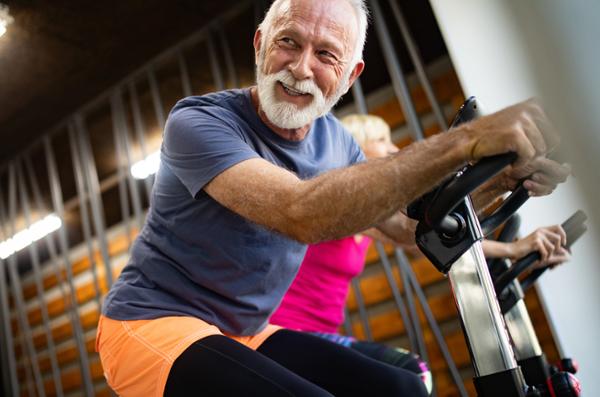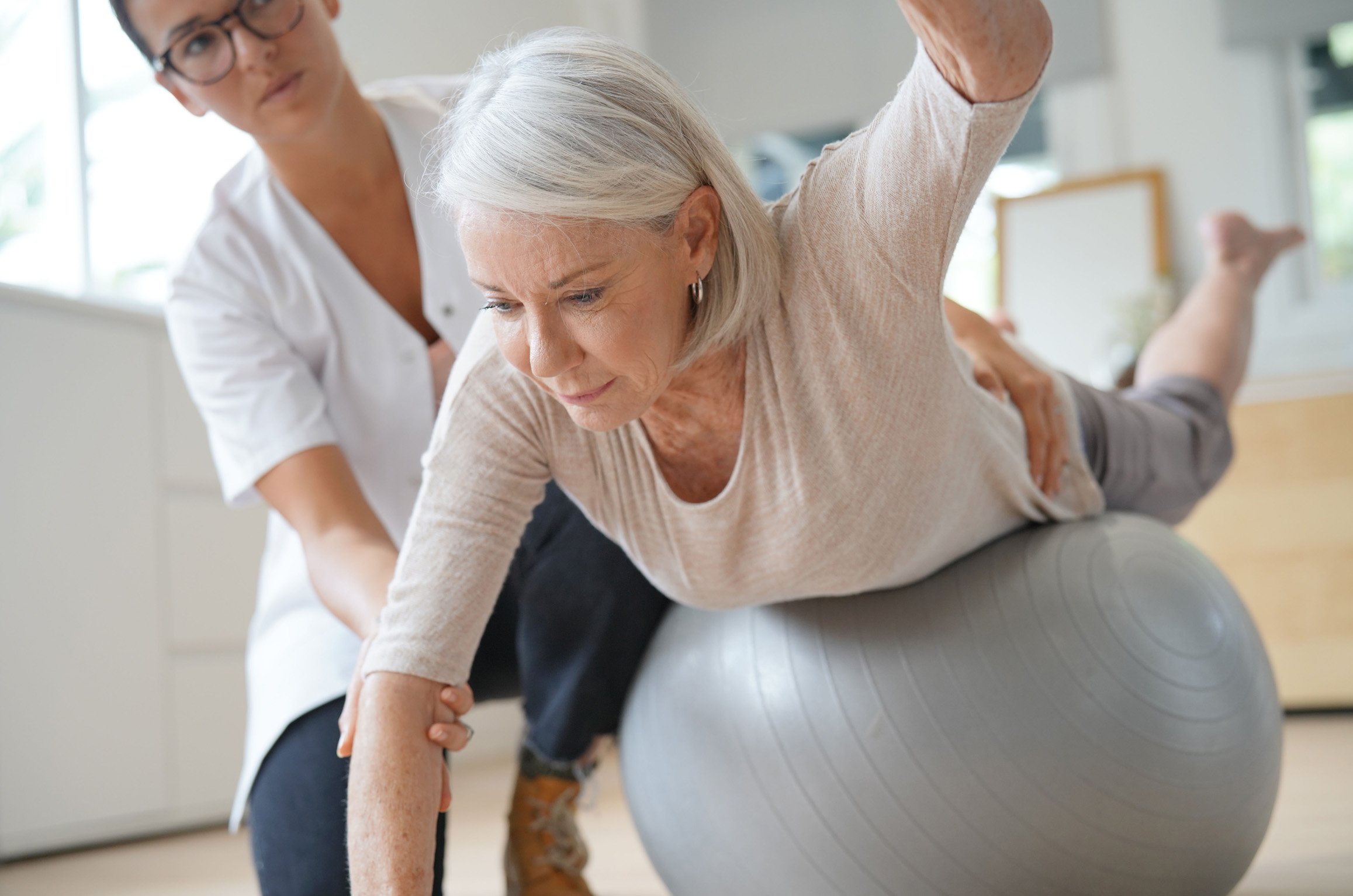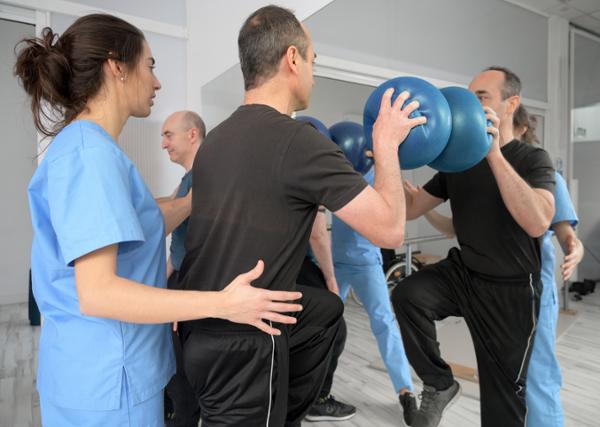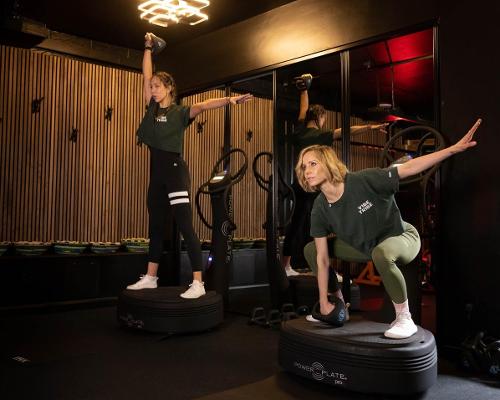features
HCM People: Dr Natasha Jones & Suzi Gardner
A new report called Benefits Outweigh the Risk has established that exercise is safe for the vast majority of people – even those with medical conditions. Kath Hudson talks to the team driving the initiative

The Benefits Outweigh the Risk report is a follow-up to a 2015 research study called Exercise, the Miracle Cure. Why is it needed and what’s the aim?
Suzi Gardner: Across a large time period Sport England has heard messages about the concept of risk with regards to people getting active.
Patients who need exercise have concerns that it might make their symptoms worse, or even cause a catastrophic event, such as a heart attack, while 46 per cent of healthcare professionals reported that not knowing how to advise patients how to safely take part in physical activity – and not knowing how to allay their concerns about taking part – is a barrier to signposting for them.
This has precipitated a huge discussion with a range of partners, looking at how we can work together to maximise the role physical activity can play, whether that’s supporting people through ill health, or supporting the management of a condition.
This new research set out to weigh up the risks of physical activity for all adults with long term conditions and to find ways to overcome the barriers for exercise referral. The statements and advice have been written very specifically by healthcare professionals for healthcare professionals.
This isn’t a standalone piece of work – there are lots of pieces to this jigsaw – but Sport England sees Benefits Outweigh the Risk as a critical piece of work (www.hcmmag.com/benefits/risk).
What were the findings, and how will they be used?
Natasha Jones: We found that the benefits of physical activity do outweigh the risks and that the risk is very low. More interesting is how the research will empower healthcare professionals to communicate the lack of risk to their patients.
It’s not as easy as just telling someone to move more, medics need to be given tools to avoid the familiar “yes, but” conversations with patients. What is needed is a collaborative person-centred conversation, establishing what is right for that individual and how they could incorporate activity into their lives, taking into account specific concerns about symptoms.
Suzi Gardner: We’ll also utilise the evidence and statements as a foundation to create policy change to remove other systemic barriers. For example, Benefits Outweigh the Risk calls for a review of the need for pre-participation screening, which is a barrier for many when it comes to getting active.
In the next phase of this initiative, we’ll work with all interested partners, looking at how to remove systemic barriers and will be talking to all interested parties – including the health and fitness sector – to see what the scope of a review could be, how that could go forward and who should lead it.
We’ll be working with the Richmond Group of Charities to develop patient-facing messages from the content of the report. Additionally, we’ll work with CIMSPA to consider how the statements might be used within workforce development for the physical activity sector, leading to conversations around the standards, workforce expectations and what’s needed to support people with long-term conditions.
Is change coming?
Natasha Jones: Yes, it does feel as though change is coming and it’s a really exciting time. The work Sport England is funding and promoting is novel and recognised internationally.
There’s still more to be done, however, to support medical professionals in helping patients overcome their barriers – for example, we need to get past the firmly entrenched idea that people should be signed off by a doctor before they can get physically active, as this is not the case.
We need to adopt a more rounded view of the patient, to understand what matters to them and what they’re interested in, rather than defining them by their condition. It’s all about empowerment and inspiration and how to best support them to achieve their goals.
There are a growing number of people with long term conditions and co-morbidities, so how we tackle inequalities and support those who are further away from physical activity to becoming physically active is an important issue.
Benefits Outweigh the Risk is not a standalone piece of work, it ties in with the Moving Healthcare Professionals Programme (www.hcmmag.com/MHP), which is educating healthcare professionals about the power of physical activity. The award-winning Moving Medicine project (www.movingmedicine.ac.uk) and Active Hospital Project (www.movingmedicine.ac.uk/active-hospitals) have also gained national and international traction in healthcare and we work tirelessly to continue to build momentum.
Sport England’s engagement with the National Centre for Sport and Exercise Medicine at Sheffield Hallam for the creation of Easier to be Active is also looking at how to remove barriers to activity (www.hcmmag.com/easiertobeactive).
What can the health and fitness industry do to build a closer relationship with healthcare?
Suzi Gardner: It doesn’t just come from one side, we need to work together to create better trust between the different sectors, and ultimately develop a seamless journey into exercise, as part of a multi-disciplinary team.
Natasha Jones: We need to keep person empowerment at the forefront. As healthcare professionals, we should keep building motivation and building confidence as our primary aim. Part of that could be to reassure people about specific medical concerns.
I am not an advocate of ‘exercise prescription‘, which can be too directive and ignore the tenets of successful behavioural change. Medicalising exercise should only be necessary if the patient deems it to be so.
What I’m in favour of is the continuation of a supportive conversation, bearing in mind that people are much more likely to engage in activity if the idea comes from them.
The fitness industry can continue that journey by promoting autonomy while empowering people to find their own starting point and build from there. If we all keep that at the forefront of what we’re trying to do, a lot of the barriers will drop away.
• Pre-participation screening is an unnecessary barrier as long as people start gently and build gradually
• Most people with long-term conditions want to be more active. However, complex psycho-social barriers lead to high levels of inactivity in this growing population
• Healthcare professionals and the fitness industry can be most effective if they take time to understand barriers from the individual’s point of view

• 69 per cent of people living with long-term health conditions would like to be more active, according to research conducted by DJS Research as part of the We Are Undefeatable campaign.
• Reducing inactivity/increasing activity levels could help reduce the risk of up to 40 per cent of long-term health conditions, as well as helping improve quality of life and sleep, managing stress and helping reduce social isolation.
• 43 per cent of the population of England has at least one long-term health condition, according to patient data.
• People with long-term health conditions are almost twice as likely to be inactive (less than 30 minutes a week) than those without, according to Sport England’s physical activity data.
• 56 per cent of people with one impairment are active, this decreases to 48 per cent for people with two, and drops to 37 per cent of those with three or more.
• Increasing levels of inactivity are evident in people from diverse ethnic backgrounds, more deprived geographical areas and among older populations.

Dr Natasha Jones is co-author of the Benefits Outweigh the Risk report

Suzi Gardner is National partnership lead for health at Sport England









































































